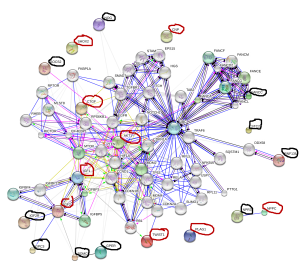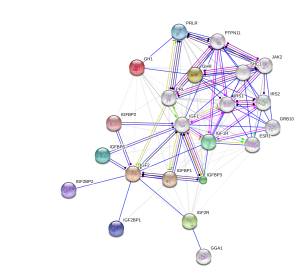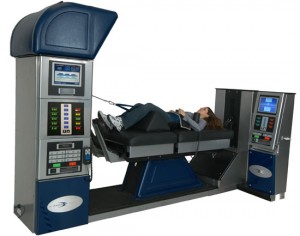AC Electrical Signals Differentiates MSCS Into Bone and Cartilage Tissue Versus Adipose (Breakthrough)
These days I don’t get to do too much research on this website anymore. My duties are now more towards making money and proving a stable living for my future wife (yes, I am supposed to be getting married in the Summer of next year if everything goes to plan). I had once said that the main reason people give up on this endeavor is if they get have children. Life takes over and this dream of figuring out how to become taller takes a sort of backseat. I am not sure how this website and the research will continue once I do get married. I don’t plan to have kids anytime soon so maybe I still can push through a little more research.
I did want to give you guys a little bit of good news though, which is from a patent I found. It is entitled “Alternating electric current directs, enhances, and accelerates mesenchymal stem cell differentiation into osteoblasts and chondrocytes but not adipocytes – Patent #: WO 2013049598 A1″. I actually found the patent when I was trying to find which patents from Google referenced Dr. Robert O. Becker’s research that was done 20-30 years ago.
The 2nd reference: HRONIK-TUPAJ MARIE ET AL: “Osteoblastic differentiation and stress response of human mesenchymal stem cells exposed to alternating current electric fields“, BIOMEDICAL ENGINEERING ONLINE, BIOMED CENTRAL LTD, LONDON, GB, vol. 10, no. 1, 26 January 2011 (2011-01-26), page 9, XP021088361, ISSN: 1475-925X, DOI: 10.1186/1475-925X-10-9
The patent just got published in the last few months from what I would guess are a bunch of professors, post-docs, and graduate students from the University of Texas System.
The quick abstract – A method for directing, enhancing, and accelerating mesenchymal stem cell functions using alternating electric current. Mesenchymal stem cells are preferentially directed to either osteoblast or chondrocyte lineages, but not to the adipocyte lineage, when exposed to alternating electric current.
So why is this patent such a breakthrough?
I haven’t taken the time to dissect the patent but this is what I do know. The bone marrow of humans change as they get older. When the human is young, their bone marrow is more of a red color, which signifies healthy hematopeietic cells. I think I will let Wikipedia explain it a little better than me…
From the Wikipedia article on Bone Marrow – The two types of bone marrow are medulla ossium rubra (red marrow), which consists mainly of hematopoietic tissue, and medulla ossium flava (yellow marrow), which is mainly made up of fat cells. Red blood cells, platelets, and most white blood cells arise in red marrow…. At birth, all bone marrow is red. With age, more and more of it is converted to the yellow type; only around half of adult bone marrow is red. Red marrow is found mainly in the flat bones… and in the cancellous (“spongy”) material at the epiphyseal ends of long bones such as the femur and humerus. Yellow marrow is found in the medullary cavity, the hollow interior of the middle portion of long bones.
Anyone who has ever done research extensively on adult height increase would know that it is critical that one can get the MSCS that are still inside the epiphysis outer cortical bone tissue to turn into the right type of tissue. Most of us are already adults, so the MSCS that are left in the long bone ends/epiphysis, in the marrow, already are surrounded by yellow type bone marrow , which is just fat tissue or adipocyte.
I had reference Dr. Carl Brighton multiple times in this website, and his patent about using Capacitative Direct Current Electrical Signals to stimulate Epiphyseal Plate Increase growth was the find that sparked this idea inside of my head that maybe electrical stimuli is one of the major keys.
However, my engineering background from taking multiple Electrical Engineering courses and the Electrodynamics course from Junior level undergraduate physics programs made me always felt that Alternating Current (AC) was probably much better than DC (Direct Current) Emission.
I had found from other patents that Dr. Brighton had to his name published in the late 1980s showed that he kept on talking about these potential ways to up-regulate the expression of a lot of genes who go on to make proteins that are found in the extracellular matrix of hyaline cartilage. All of these involved setting some type of electrical emitting device to a specific frequency,
Examples:
- Up-regulation of bone morphogenetic protein (bmp) gene expression in bone cells by electromagnetic signals – WO 2005070136 A3
- Regulation of matrix metalloproteinase gene expression using specific and selective electrical and electromagnetic signals – WO 2004112708 A3
- Resolution of aggrecan gene expression using specific and selective electrical and electromagnetic signals – WO 2004029210 A3
- Regulation of type ii collagen gene expression using specific and selective electrical and electromagnetic signals – WO 2004033644 A3
From our 4th example, these are the exact figures on what he claims are the set points for the numerical values…
- …the generating step comprises the step of generating a specific and selective electric field having an amplitude of approximately 20 mV/cm, a sine wave configuration, a duty cycle of approximately 1/12, and a frequency of approximately 60 kHz.
- …the step of applying the specific and selective electric field to the cartilage tissue for a duration of approximately 30 minutes every 24 hours.
- …the generating step comprises the steps of selectively varying the amplitude, duration, duty cycle, frequency, and waveform of the specific and selective signal until the up-regulation of the gene expression of type II collagen mRNA in the cartilage tissue by the generated field is substantially optimized.
This shows that Brighton went away from the idea of applying DC Currents, and moved on to AC Currents. If he was not using AC Current, then he was using pulsing electrical currents. This was the other proposed idea which I had predicted in one of my last breakthrough posts “Using An Electrical Pulse Massager Physiotherapy Device To Increase Longitudinal Growth In Vivo For Open Growth Plates (Big Breakthrough)”
So either one of two things to control gene expression of specific cartilage protein stimulation…
- He is using AC Current Signals
- He is using pulsing electrical signals.
There is a difference between the function shape of the two types of electrical signals.
The Implication
I think we have found very good evidence that instead of using a DC signal to stimulate cartilage regrowth, we should be trying either Pulsing Electrical Signals or AC Electrical Signals. That is what is going to keep the few Mesenchymal stems cells still left in the bone marrow of the medullary cavity which already consists of half of adipocyte/fat tissue cells to differentiate specifically into cartilage and bone tissue.
Of course now there are two questions that develops.
- Is it better to be emitting AC Electrical signals or Pulsing Electrical signals?
- Which values for the following parameters (1. amplitude, 2. duration, 3. duty cycle, 4. frequency, and 5. waveform of the specific and selective signal) should we have to set the device (whether function generator, pulse generator, TENS Unit, Pulse Massager, etc. ) to to get the MSCS to differentiate specifically towards the chondrogenic line?





